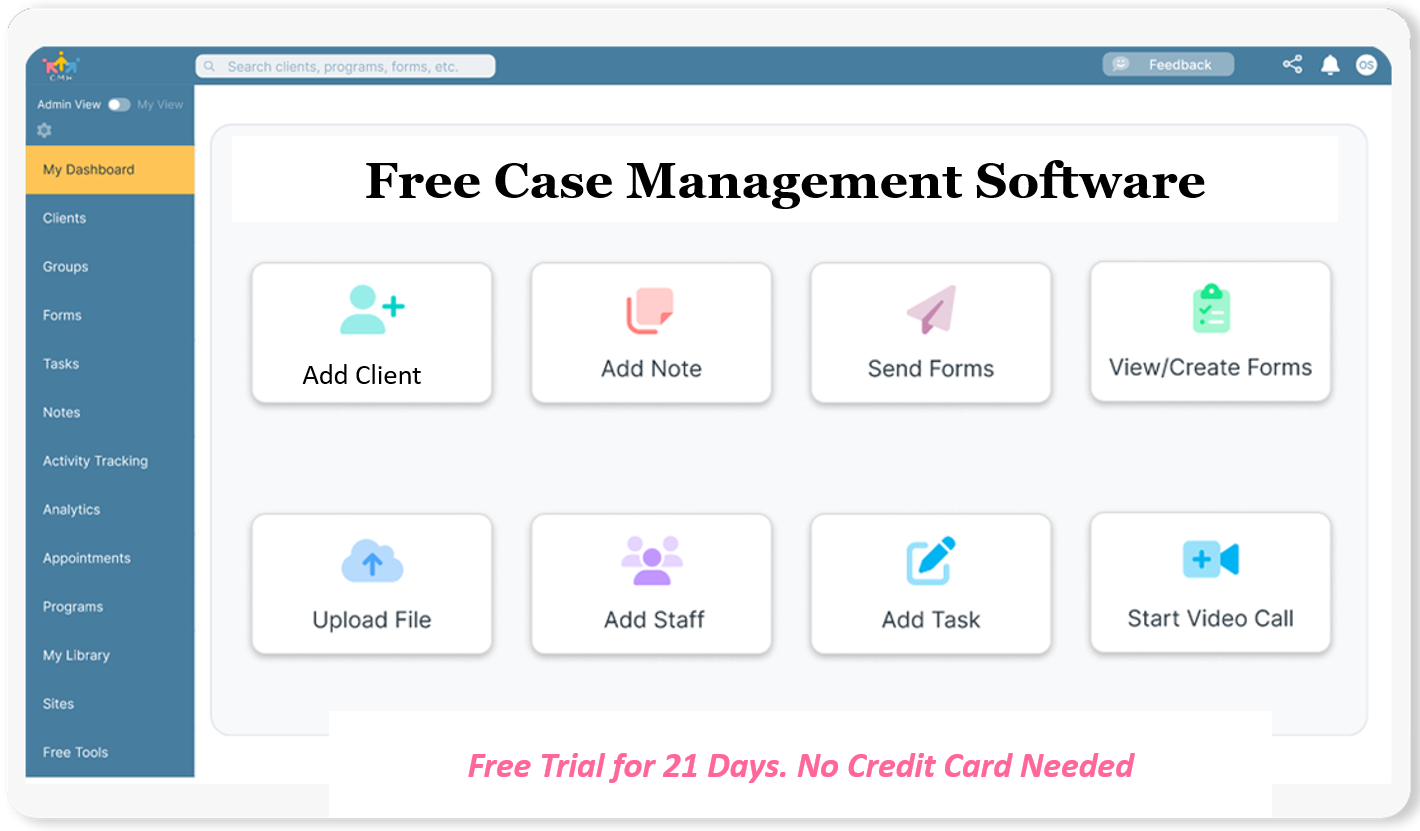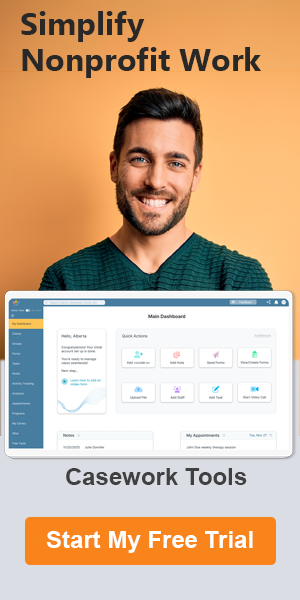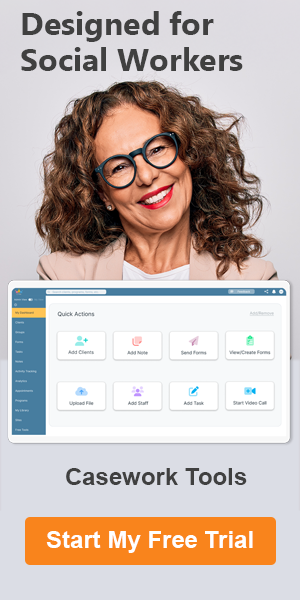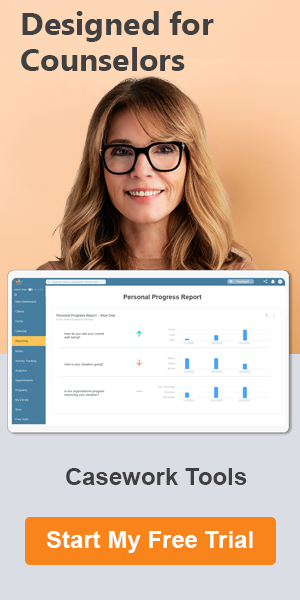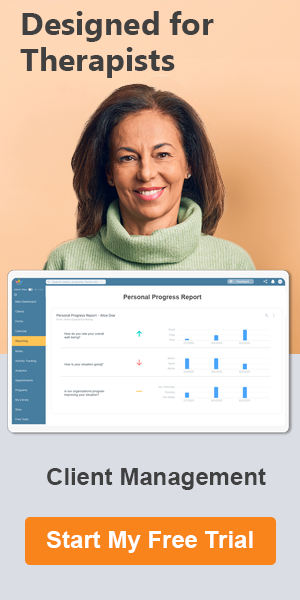Understanding Applied Behavior Analysis – Everything You Need to Know to Get Started
Welcome to your ultimate guide for Applied Behavior Analysis (ABA). This session walks you through the foundational principles, practical techniques, tools, and ethical considerations you need to deliver impactful ABA interventions — whether you’re just starting out or refining your expertise.
Every dedicated professional in the ABA field has encountered that pivotal client, the one whose complexities push you to delve deeper into the very bedrock of your practice. Consider a recent case involving Leo, a 9-year-old presenting with significant communication deficits and challenging behaviors that impacted his ability to learn in a school setting.
Initial, less structured interventions for Leo had stalled, leading to frustration for both Leo and his educational team. It was at this juncture that a meticulous application of the core tenets of applied behavior analysis became not just helpful, but absolutely essential for identifying actionable pathways to progress.
This experience, and many others like it, underscores that a profound understanding of applied behaviour analysis is the true cornerstone of impactful intervention.
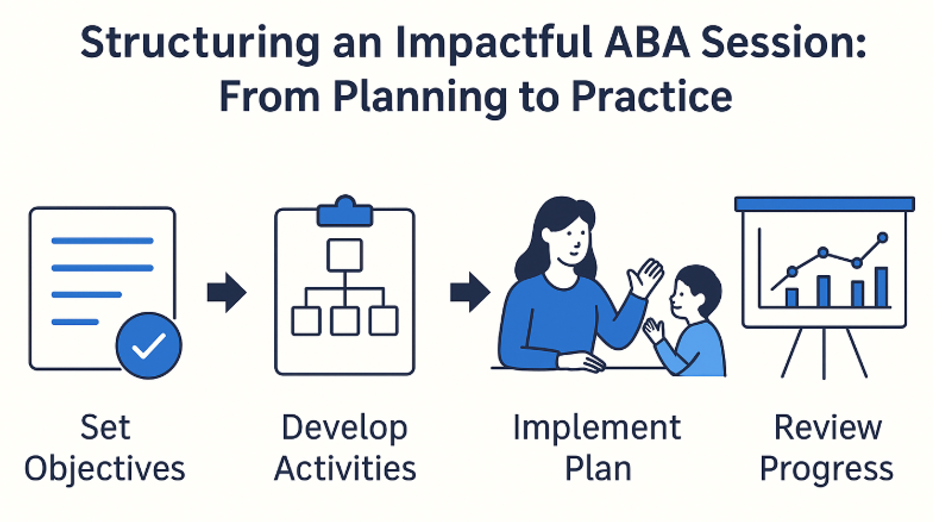
The Foundation of Practice: Understanding ABA
At its heart, applied behavior analysis is the scientific study of principles of learning and behavior. It is a systematic approach to understanding why individuals do what they do, and then applying that understanding to teach new skills and reduce challenging behaviors in socially significant ways.
This means we aren’t just observing actions; we are engaging in aba behavior analysis, rigorously examining the environmental factors that influence behavior. It’s about taking the theoretical insights of applied behavior – the fundamental laws of behavior – and translating them into practical, real-world strategies. This systematic approach differentiates it from less empirically -driven methods, ensuring that our interventions are effective and accountable.
Moreover, the field of applied behavior analysis encompasses various specialized applications. We delve into adaptive behavior analysis to enhance skills essential for daily living and independence, ensuring individuals can navigate their environments effectively.
Let’s get started
Watch the video below or read the guide below.
Through analytical behavior analysis, we strive to demonstrate precise functional relationships between our interventions and the observed behavioral changes, constantly refining our methods. Ultimately, every aba applied behavior analysis effort is geared towards creating positive and lasting improvements in the lives of our clients, driven by data and guided by scientific principles.
Pro Tip: When discussing the core principles of applied behavior analysis with colleagues or stakeholders, always emphasize its scientific, data-driven nature. This approach helps to distinguish ABA from general behavioral management and highlights the precision inherent in every aba behavior analysis.
Table of Contents
- Essential Tools for Success: ABA Assessment and Data Collection
- Conducting Comprehensive ABA Assessment: Beyond the Basics
- Measurement in ABA and Discontinuous Measurement
- Delivering Effective ABA Sessions: Techniques and Strategies
- Structuring an Impactful ABA Session: From Planning to Practice
- Advancing Your Practice with Applied Behavior Analysis Resources
- Building Expertise: Resources and Training for ABA Professionals
- Professional Development: From ABA Training to Behavioral Assessment ABA
- Ethical Considerations and Future Directions in Applied Behavior Analysis
- Free Downloadable Resource: Comprehensive Behavioral Assessment ABA Checklist
- ABA Guide Conclusion: Empowering Practice Through Purposeful Action
- FAQs
Pro Tip: To truly solidify your understanding of applied behavior analysis, regularly ground your practice in its fundamental principles. Before designing any intervention, pause to explicitly identify the behavioral principle (e.g., reinforcement, punishment, extinction) you are applying and why, ensuring every action is theoretically sound.
Essential Tools for Success: ABA Assessment and Data Collection
Effective intervention in applied behavior analysis begins long before the first teaching trial; it starts with a thorough and insightful assessment.
This initial phase is where we lay the groundwork and conduct an ABA assessment for understanding the individual’s current skills, unique needs, and the functions of any challenging behaviors.
Without robust data from a comprehensive aba assessment, even the most well-intentioned interventions can miss the mark. It’s akin to navigating without a map—you might get somewhere, but probably not efficiently or directly to your desired destination.
The section below covers best practices for conducting an applied behavior analysis assessment.
Pro Tip for: Beyond simply collecting data, regularly graph and visually analyze your data for all target behaviors and skills. Visual analysis of trends is a powerful and efficient way to make immediate, data-driven decisions about the effectiveness of your ABA program for autism, far more impactful than just reviewing raw numbers.
Conducting Comprehensive ABA Assessment: Beyond the Basics
A crucial part of this process involves going beyond surface-level observations. Consider a scenario where a child struggles with transitions.
While it might seem like simple non-compliance, a detailed aba assessment could reveal the behavior’s function – perhaps it’s an escape maintained by the removal of demands, or attention-seeking. To achieve this depth, practitioners rely on a suite of specialized tools.

The journey often begins with a comprehensive aba intake form, gathering essential background information, developmental history, and initial concerns from stakeholders. Following this, a robust behavioral assessment aba delves into direct observation, interviews, and standardized assessments.
Key tools here include:
- Functional Behavior Assessment (FBA) tools: These are paramount for identifying the function of challenging behaviors. This often involves indirect assessments like the Motivation Assessment Scale (MAS) or the Questions About Behavioral Function (QABF), and direct observational tools such as ABC (Antecedent-Behavior-Consequence) data sheets, which can be codified in an abc behaviour form.
- Skills-based assessments: Instruments like the Verbal Behavior Milestones Assessment and Placement Program (VB-MAPP), the Assessment of Basic Language and Learning Skills-Revised (ABLLS-R), and the Essentials for Living (EFL) provide a detailed picture of a learner’s current skill repertoire across various developmental domains, aiding in program prioritization.
- Adaptive behavior assessments: Tools such as the Vineland Adaptive Behavior Scales are critical for evaluating an individual’s daily living skills and independent functioning, directly informing adaptive behavior analysis.
The systematic application of these tools and methods, including an aba descriptive assessment, helps us understand not just what a person does, but why they do it, which is paramount for effective intervention design. Consistent aba evaluation ensures that initial hypotheses are accurate and that the chosen intervention path remains appropriate.
Pro Tip: Always triangulate your assessment data. Don’t rely solely on one source (e.g., direct observation or parent interview). Combining indirect measures (interviews, questionnaires), direct observations, and standardized skill assessments provides a more robust and accurate picture of a client’s needs, leading to more targeted and effective ABA interventions.
Measurement in ABA and Discontinuous Measurement
The very backbone of applied behavior analysis is its commitment to objective, measurable data. Effective measurement in ABA allows practitioners to quantitatively track progress, determine the efficacy of interventions, and make data-driven decisions. This precision distinguishes ABA as a truly scientific discipline.
For instance, an aba research study’s findings are only as strong as the data collected.
While continuous measurement (like frequency or duration recording) provides a complete picture, sometimes aba discontinuous measurement methods are more practical or appropriate, especially in busy settings.
These include:
- Partial Interval Recording: Marking if a behavior occurred at any point during an interval.
- Whole Interval Recording: Marking if a behavior occurred throughout the entire interval.
- Momentary Time Sampling: Marking if a behavior occurred precisely at the end of an interval.
Understanding when and how to accurately employ aba discontinuous measurement is a crucial skill for any practitioner. All this data collection and analysis informs the continuous aba evaluation process, guiding adjustments to an individual’s program.
Using an aba applied behavior analysis checklist can also enhance the validity of both data collection and intervention implementation, ensuring consistency across therapists and sessions. The ongoing analysis of this data forms a critical feedback loop, allowing for prompt and informed modifications to the intervention strategies.
Pro Tip: Beyond simply collecting data, regularly graph and visually analyze your data for all target behaviors and skills. Visual analysis of trends is a powerful and efficient way to make immediate, data-driven decisions about the effectiveness of your ABA program for autism, far more impactful than just reviewing raw numbers.
Delivering Effective ABA Sessions: Techniques and Strategies
The true art of applied behavior analysis lies in the delivery of effective sessions that translate assessment insights into tangible progress for the client. This is where the science meets practice, requiring not only a deep understanding of behavioral principles but also skilled implementation and adaptability. Every ABA session is an opportunity to teach, reinforce, and shape behaviors that enhance an individual’s quality of life.
But impactful ABA sessions don’t happen by chance — they are carefully structured and responsive to the learner’s evolving needs. A well-executed session begins with clear, measurable objectives rooted in a thorough functional behavior assessment. From there, targeted activities are introduced using evidence-based ABA techniques such as discrete trial training, task analysis, prompting, and positive reinforcement. The therapist must continuously observe, record, and respond to the learner’s behavior in real time, making necessary adjustments to maintain engagement and promote generalization of skills.
Consistency is key, but so is creativity. The most successful practitioners know when to pivot strategies, modify prompts, or fade reinforcement to foster greater independence. They balance structure with flexibility, data with intuition, and routines with moments of connection that build trust and rapport.
Ultimately, each session contributes to a larger trajectory of growth — where communication improves, problem behaviors decrease, and meaningful life skills are mastered. Delivering ABA in this intentional, dynamic way is what elevates the practice from technical application to a truly person-centered, transformative support system.
Pro Tip: Beyond just following the program, actively “read” your client’s behavior during an ABA session. Look for subtle cues of engagement, frustration, or satiation with reinforcers, and be prepared to adjust your pace, materials, or activities in real-time to maintain motivation and optimize learning.
Structuring an Impactful ABA Session: From Planning to Practice
Optimizing an aba session for maximum impact requires meticulous planning and a fluid approach to implementation. Consider a scenario where a therapist was working with a client on a complex vocational skill.
Initial sessions were slow, but by refining the session structure—starting with highly preferred activities, interspersing mastered tasks with new ones, and building in frequent, varied reinforcement—the client’s engagement soared, leading to faster skill acquisition.
This highlights that a well-structured aba session is not rigid, but rather a dynamic environment designed to maximize learning opportunities.
Before each session, a skilled applied behavior analysis aba therapist should review the client’s goals, recent data, and prepare all necessary materials. This includes selecting appropriate teaching targets, identifying potential reinforcers, and anticipating any challenges. During the session, you should systematically present learning opportunities, provides prompts as needed, and deliver reinforcement for correct responses.
Documentation is critical, and utilizing an aba session notes template ensures that all relevant data, observations, and program adjustments are accurately recorded, providing a clear roadmap for the next session. The goal is to create an engaging and effective learning environment that promotes consistent progress.
Pro Tip: Always enter each ABA session with a plan, but be ready to pivot based on the learner’s responses. The most effective interventions happen when structure and flexibility work hand-in-hand — data drives decisions, but real progress comes from meeting the client where they are in the moment.
🎓 Building Expertise: Resources and Training for ABA Professionals
Developing expertise in applied behavior analysis (ABA) requires more than just academic credentials — it’s about cultivating a toolkit of practical skills, ethical insight, and adaptive strategies. Whether you’re a new ABA therapist or a seasoned applied behavior analyst, the right resources can accelerate your growth and impact.
Core Training Pathways
- University-Based ABA Programs: These offer foundational knowledge in analytical behavior analysis, often leading to BCBA certification.
- Online Certification Courses: Flexible options for professionals balancing work and study, including RBT and BCaBA tracks.
- Workshops & Webinars: Stay current with trends in intensive behavioural intervention, adaptive behavior assessment, and aba descriptive assessment.
Practical Tools & Templates
- ABA Intake Forms and ABA Session Notes Templates streamline documentation and improve consistency.
- Applied Behavior Analysis Checklists help ensure thorough evaluations and treatment planning.
- ABC Behaviour Forms support functional behavior assessments and intervention design.
Pro Tip: Pair your training with real-world mentorship. Shadowing experienced professionals and participating in peer review groups can bridge the gap between theory and practice — especially when navigating complex behavioral assessment ABA cases.
Advancing Your Practice with Applied Behavior Analysis Resources
In the evolving field of autism support, staying informed and continually expanding your skill set is essential. Advancing your practice with high-quality applied behavior analysis (ABA) resources empowers you to deliver more effective, personalized interventions that truly make a difference. Whether you’re a seasoned BCBA, a new RBT, or a caregiver eager to apply ABA principles at home, the right tools and materials can elevate your confidence and outcomes.
Access to curated ABA resources — from training modules and visual aids to data collection templates and intervention checklists — enhances your ability to plan, execute, and refine behavior programs. These resources bridge the gap between theory and real-world practice, helping you stay aligned with best practices, ethical guidelines, and the unique needs of each individual you support.

Moreover, integrating new research findings, collaborating with interdisciplinary teams, and participating in professional development opportunities allows you to stay at the forefront of behavioral science. The more informed and equipped you are, the more impact you can create — not just in reducing challenging behaviors, but in building meaningful, lasting life skills.
Let the resources you choose be a reflection of your commitment to growth, excellence, and transformative care in the field of ABA.
Whether you’re planning your next aba session or documenting with an aba session notes template, high-quality tools elevate your practice:
- Measurement in ABA Checklist: Learn to track progress with both continuous and aba discontinuous measurement techniques.
- ABA Intake Forms & ABC Behaviour Forms: These templates streamline client onboarding and behavior tracking. The free downloadable form offered in the section includes clearly labeled sections, checkboxes, and space for detailed responses, making it perfect for onboarding clients and organizing essential intake information.
- Applied Behavior Analysis Checklist: Download our free, comprehensive behavioral assessment ABA checklist to ensure you’re covering all critical domains.
Professional Development: From ABA Training to Behavioral Assessment ABA
As you transition from theory to practice, regular reflection and evaluation are key to becoming a more effective and confident practitioner.
True professional growth in the field of applied behavior analysis is not just about initial certification — it’s about continuous learning, skill refinement, and meaningful application.
- Conduct routine ABA evaluations across behavior plans. Regular reviews ensure your interventions remain effective, ethically sound, and aligned with client goals. Use data to drive decision-making and adjust plans based on progress and changing needs.
- Explore applied behavior analysis interview questions to improve your hiring and supervision process. Whether you’re recruiting RBTs or mentoring new BCBAs, asking the right questions helps you assess practical knowledge, ethical judgment, and cultural responsiveness — all of which are critical for building a strong, values-driven team.
- Build confidence handling intensive behavioural interventions and adapting sessions for varied populations. Develop the flexibility to modify strategies for different age groups, abilities, and settings. Mastery in ABA means being able to shift from early intervention with toddlers to school-based supports for teens, to life skills coaching for adults — all while maintaining fidelity to behavioral principles.
- Stay updated with ongoing ABA training and credentialing opportunities. Attend workshops, join professional organizations, and engage with continuing education to stay current with best practices, new research, and innovations in the field.
Professional development in ABA is a journey of lifelong learning. The more you invest in your growth, the more impactful and empowering your practice becomes — for both you and the individuals you support.
Ethical Considerations and Future Directions in Applied Behavior Analysis
As applied behavior analysis continues to evolve, ethical practice remains at the heart of everything we do. Ensuring the dignity, autonomy, and cultural respect of each individual is not only a professional obligation but a moral imperative.
Practitioners must balance the need for behavior change with a deep understanding of the individual’s lived experience, preferences, and goals — especially in autism intervention, where personal identity and neurodiversity are central themes.
Ethical Considerations in ABA Include:
- Informed consent and assent: Always obtain clear, ongoing consent from caregivers and, when appropriate, from the individual receiving services. Respect their right to ask questions, decline participation, or revise goals.
- Cultural humility and inclusion: ABA must never be a one-size-fits-all model. Tailoring interventions to fit an individual’s cultural background, language, values, and identity is essential for ethical and effective support.
- Least restrictive interventions: Ethical ABA practice involves using the most supportive and least intrusive methods possible. Focus on building functional skills that reduce the need for restrictive procedures.
- Transparency and accountability: Practitioners should maintain open communication with families and team members, document progress clearly, and be honest about program limitations or challenges.
Future Directions in ABA:
Looking ahead, the future of applied behavior analysis lies in greater collaboration, innovation, and inclusivity. As research advances, we are seeing more integrated models that combine ABA with complementary therapies, such as trauma-informed care, mindfulness-based practices, and technology-assisted interventions like virtual reality or AI-driven data tracking.
There is also a growing movement toward neurodiversity-affirming ABA, which seeks to support individuals on the autism spectrum without attempting to erase their identity or natural ways of interacting with the world. This shift places a stronger emphasis on self-advocacy, functional communication, and quality-of-life outcomes over compliance for its own sake.
Moreover, the field is expanding its reach beyond autism to address behavioral health challenges in aging populations, addiction recovery, organizational behavior management, and more — opening doors for behavior analysts to make an impact in diverse and meaningful ways.
Final Thought: The future of ABA depends not only on what we know, but how we apply it — with integrity, compassion, and a relentless commitment to improving lives through respectful, evidence-based care.
Free ABA Tools & Templates to Elevate Your Practice
Access professional-grade tools to streamline your assessments, track client progress, and simplify onboarding.
These free, downloadable ABA resources are designed for behavior analysts, RBTs, educators, and caregivers who want to deliver high-quality, data-driven interventions with confidence.
📥 Download: Free Measurement Techniques in ABA (Word Doc)
This guide covers both continuous and discontinuous measurement strategies, including frequency, duration, interval recording, and momentary time sampling. It also features a sample data collection table to help you apply these methods in real-time settings — perfect for teaching, training, or hands-on use in sessions
📥 Download Free ABA Intake & ABC Behaviour Form
This form streamlines client onboarding and ABC behavior tracking. It includes labeled sections, checkboxes, and open-text fields covering background, medical history, behavioral concerns, goals, and strengths — plus a 10-row ABC behavior log table for clear documentation.
Use the intake form before your initial assessment to gather a complete history and set goals collaboratively. Then use the ABC form consistently to identify patterns and triggers across different settings.
📥 Download Applied Behavior Analysis Checklist
Our comprehensive Behavioral Assessment ABA Checklist ensures you’re covering every critical domain during initial assessments — from intake and functional analysis to reporting and intervention planning. A perfect companion for BCBA evaluations or supervision.
Print multiple copies of this checklist and keep them in your session binder. It serves as a roadmap during assessment and can be a valuable reference when conducting peer reviews or clinical audits.
Forms and Templates
Sign up today to our Case Management Hub software for access to the following behavior forms and templates:
Free Trial (14 Days)
- Behavior Intervention Plan (BIP) Template
- Behavior Session Attendance Log
- Behavior Supervision Log (RBT, BCaBA)
- Behavior ABA Intake Form
- Behavior ABC Intake Form
- Behavior Care Discharge Summary Template
- Behavior Care Parent & Caregiver Training Log
- Behavior Client Consent for Treatment & Data Sharing
- Behavior Data Collection Sheets (Excel)
- Behavior Initial Authorization Request Form (Insurance)
- Behavioral Incident Report Form
- Functional Behavior Assessment (FBA) Intake Form
- Behavior Treatment Plan Template
Free Downloadable ABA Templates
- Free ABA Tasks Checklist
- Free ABC Behavior Form
- Free Behavioral Assessment ABA Checklist
- Free Measurement Techniques in ABA
Pro Tip: Always pair yourself with reinforcement before demands. Before giving instructions or placing demands on a client, take a few moments to engage in preferred activities, offer positive attention, or provide access to reinforcers. This “pairing” process helps build rapport, reduces resistance, and increases the likelihood of cooperation. The stronger the positive association with the therapist, the more effective the sessions become.
Pro Tip: Create a “grab-and-go” ABA toolkit — a folder (digital or physical) containing your most-used resources like intake forms, ABC logs, and assessment checklists. This saves time, supports consistency, and keeps you prepared for any session, supervision, or team meeting.
Conclusion: Empowering ABA Practice Through Purposeful Action
Delivering high-quality ABA interventions is both a science and an art — and with the right tools, knowledge, and commitment, you can make a lasting impact on the lives of those you support. Whether you’re assessing behaviors, implementing data-driven strategies, or collaborating with families, every decision you make matters.
The resources shared in this guide — from intake forms to measurement templates and behavior checklists — are more than just downloads. They are practical foundations designed to elevate your sessions, improve clarity, and ensure consistency across your practice.
But don’t stop here. ABA is a field rooted in continuous learning and reflective growth. Use these templates as a launchpad, revisit your techniques regularly, and stay informed about emerging best practices. The more confident and organized you are, the more empowered your clients will become in achieving meaningful progress.
Let these tools work for you, so you can focus on what matters most: helping individuals thrive through compassionate, individualized, and evidence-based care.
Pro Tip: Don’t wait for a crisis to refine your tools. Regularly audit your forms, checklists, and data collection methods to ensure they align with your current clients’ needs and the latest evidence-based practices.
ABA Frequently Asked Questions (FAQs)
What is the difference between continuous and discontinuous measurement in ABA?
Continuous measurement involves tracking every instance of a behavior (e.g., frequency, duration, latency), providing highly detailed data. Discontinuous measurement records behavior at specific intervals (e.g., partial interval, whole interval, momentary time sampling), offering a quicker snapshot when full-time observation isn't possible. Both are valuable depending on the setting and behavior being monitored.
Why is an ABA intake form important for behavior therapy?
An ABA intake form gathers critical background information before therapy begins. It includes medical history, developmental milestones, behavioral concerns, educational background, and goals. This information helps practitioners design individualized intervention plans that are both ethical and effective from day one.
How does the ABC Behavior Form support intervention planning?
The ABC (Antecedent–Behavior–Consequence) Behavior Form helps identify triggers and outcomes associated with a client’s behavior. By documenting what happened before, during, and after a behavior, practitioners can uncover behavioral patterns and determine the function of the behavior — which is essential for creating targeted, functional interventions.
Who can use these free ABA resources?
These resources are designed for Board Certified Behavior Analysts (BCBAs), Registered Behavior Technicians (RBTs), teachers, special education staff, caregivers, and even parents who want structured, professional tools to support individuals with autism or behavioral needs. No advanced training is required to start using them effectively.
How often should I update my ABA tools and templates?
Review your tools at least quarterly or whenever there’s a change in client goals, team structure, or clinical best practices. Keeping intake forms, assessment checklists, and data logs updated ensures that your ABA practice remains responsive, relevant, and rooted in the most current standards.
Note: Content on this website (casemanagementhub.org) is copyrighted and protected under applicable copyright laws. Unauthorized reproduction, distribution, or use of any content from this Case Management Hub website, without explicit written permission, is strictly prohibited. Read Terms of Use.
Disclaimer: Case Management Hub is an educational resource site. Our content is not medical advice. Always consult a licensed professional for personal guidance. Use of this site does not create a provider-patient relationship. Do not send us personal health information. Read our full disclaimer here: Case Management Hub Disclaimer.
Image source: Adobe stock

